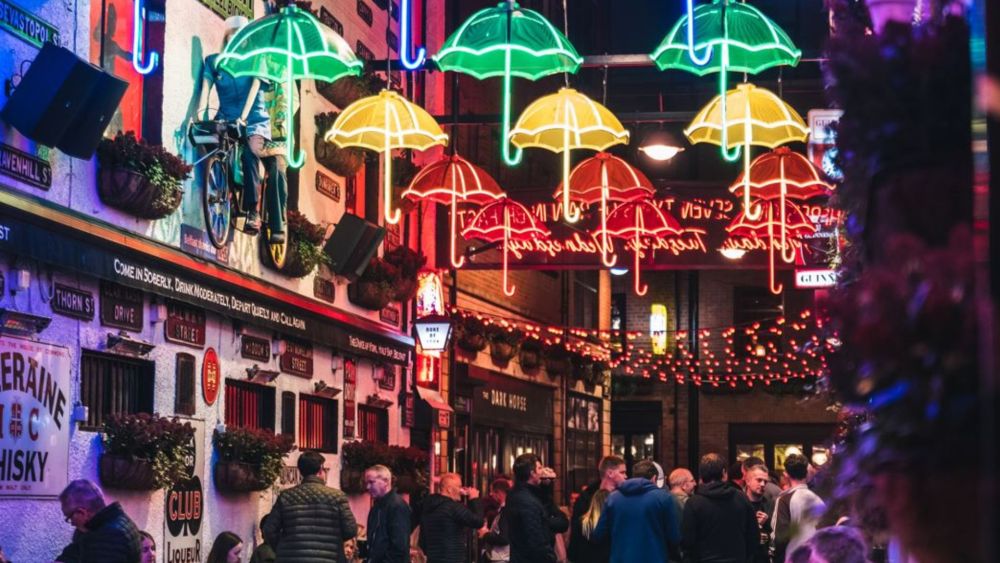

The Cathedral Quarter, named after St. Anne's Cathedral, lies at the heart of Belfast, Northern Ireland, and has become synonymous with the city's cultural renaissance and tourism boom. The history of tourism in the Cathedral Quarter is one of transformation and growth, paralleling the trajectory of Belfast itself.
In the late 20th century, as Belfast emerged from the shadows of the Troubles, the Cathedral Quarter's blend of historic architecture and cobbled streets gave rise to its potential as a tourist destination. Initial steps toward revitalization began in the 1990s with the establishment of art venues and the recognition of the area's cultural significance.
In the early 2000s, a concerted effort to promote tourism in the area led to an increase in arts and entertainment options. The development of galleries, music venues, and cultural festivals like the Cathedral Quarter Arts Festival contributed to a more vibrant street life and began to attract visitors both locally and from abroad.
Today, the Cathedral Quarter stands as a testament to Belfast's resilience and creativity. It has blossomed into a go-to destination for those interested in experience-driven travel, with a rich offering of live music, street art, dining, and historic pub culture. Its now-iconic alleyways decorated with murals and the annual Culture Night have become standout attractions.
MAC (Metropolitan Arts Centre), an important contemporary art institution, and St. Anne's Square with its bustling eateries exemplify the area's dynamic blend of old and new.
The latest tourism trends in the Cathedral Quarter reflect a broader shift towards immersive travel experiences. Visitors are increasingly seeking out the Quarter's boutique hotels, guided historical tours, and interactive workshops that provide a more personalized connection to the destination.
Sustainable tourism has also taken root, with a focus on preserving the unique character of the district while supporting local crafts and trade. Food tours emphasize local produce, and establishments proudly serve locally-sourced fare, echoing the global trend of culinary tourism.
Moreover, the digital nomad lifestyle has brought a new kind of visitor to the Cathedral Quarter, with co-working spaces and coffee shops adapting to cater to remote workers who blend their professional lives with cultural exploration.
Looking to the future, tourism in the Cathedral Quarter will likely continue to focus on authentic experiences that celebrate the district's rich history, creative community, and energetic social scene. With initiatives to improve pedestrian accessibility and ongoing investment in the area's unique spaces, the Cathedral Quarter is poised to remain a vital and enchanting part of Belfast's tourism industry.